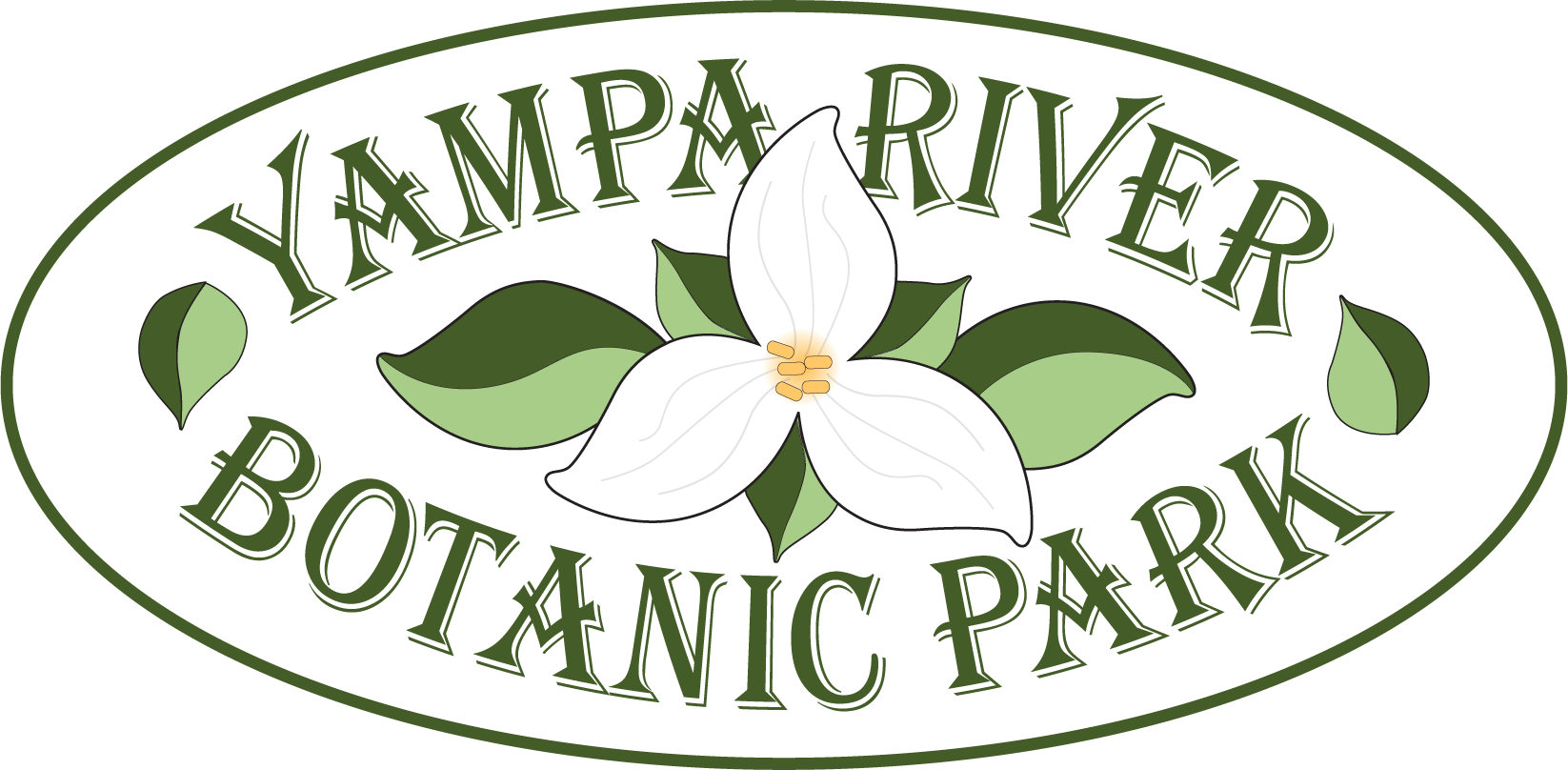Plant Collections
The Park gets an average of only 60 days a year without a killing frost, non-predictable days. These low temperatures, together with very dry summers and high levels of ultra-violet make this a challenging environment for plants. Only a few non-native trees survive these conditions, but many cultivated varieties of lower-altitude plants thrive here. Most plants in the Park are labeled with common and scientific names.
Native Plants
Steamboat has the Park Range to the north and the Flat Tops to the south. Both have a wide array of natives we have only begun to cultivate. Plants native to Northwest Colorado are identified on their plant signs. Of those, a few plants originating only in Northwest Colorado (endemics) are to be found. Here is a selection of some of the Park’s most notable native species.
Cut-Leaved Anemone
Pasque Flower
Sugarbowls
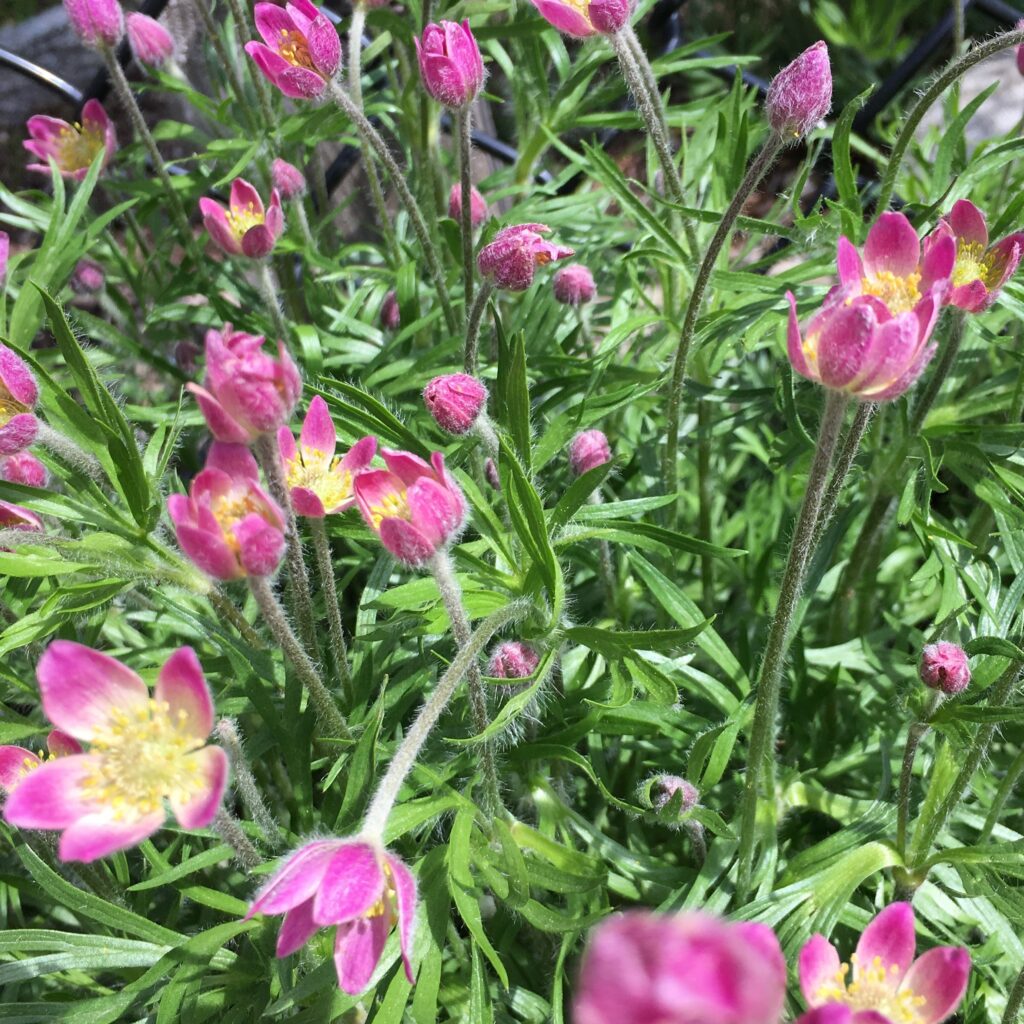
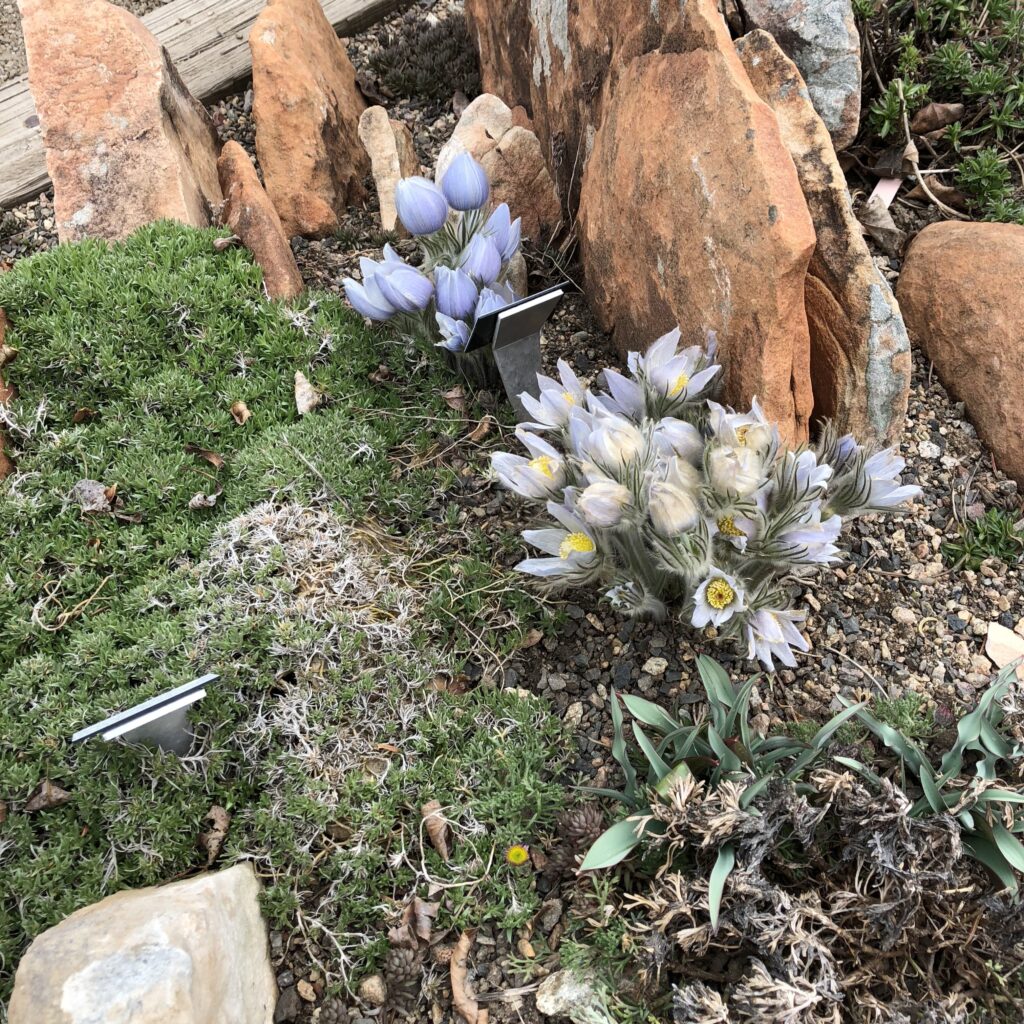
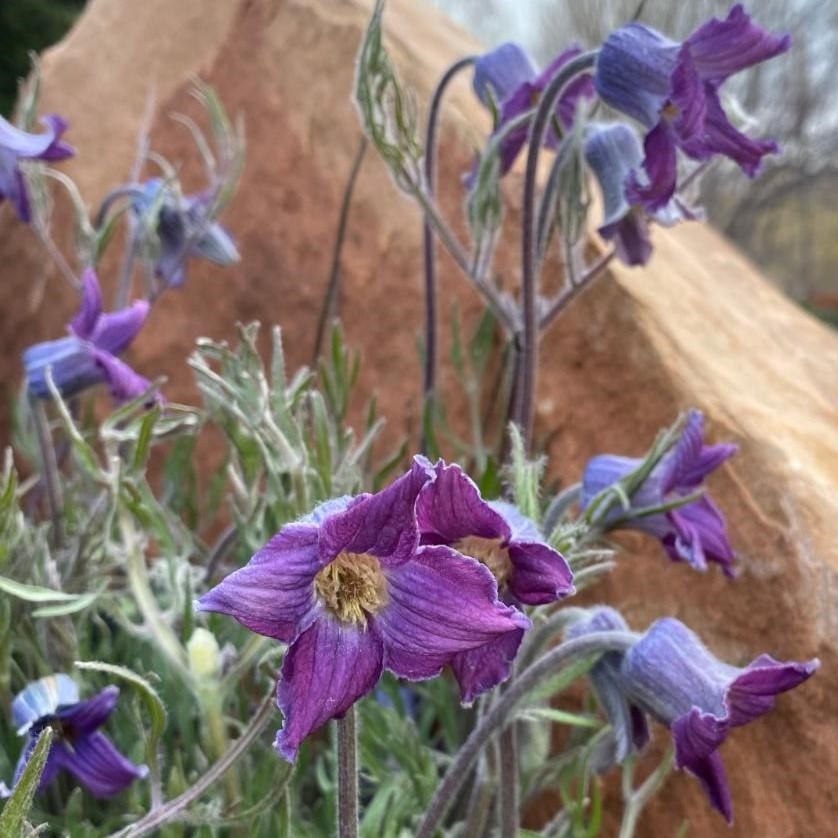
Anemone multifida v. multifida
Anemone patens v. multifda
Clematis hirsutissima
The pink part of this native anemone are the sepals, not actual petals. The deeply divided, fuzzy leaves give this plant its name. Any hike high up in the Flat Tops and you should find these lovely, delicate flowers. Look in the little bed by the Core Trail Gate for a nice clump of these.
This is one of the earliest flowers of the spring. The gray to light blue flowers bloom in meadows and grasses in sandy soil. Equally as lovely are the feathery seed heads which come after bloom. The Park’s only patch of natives is in the lower Crevice Garden.
Another spring flower found in the lower mountains. Drooping, dark purple, urn shaped flowers hang among soft foliage making the blossoms hard to see. Large clumps grow on Howelson Hill by the ski jumps. Find them in the Park at the top meadow of Dorothy’s Garden.
Seep Monkeyflower
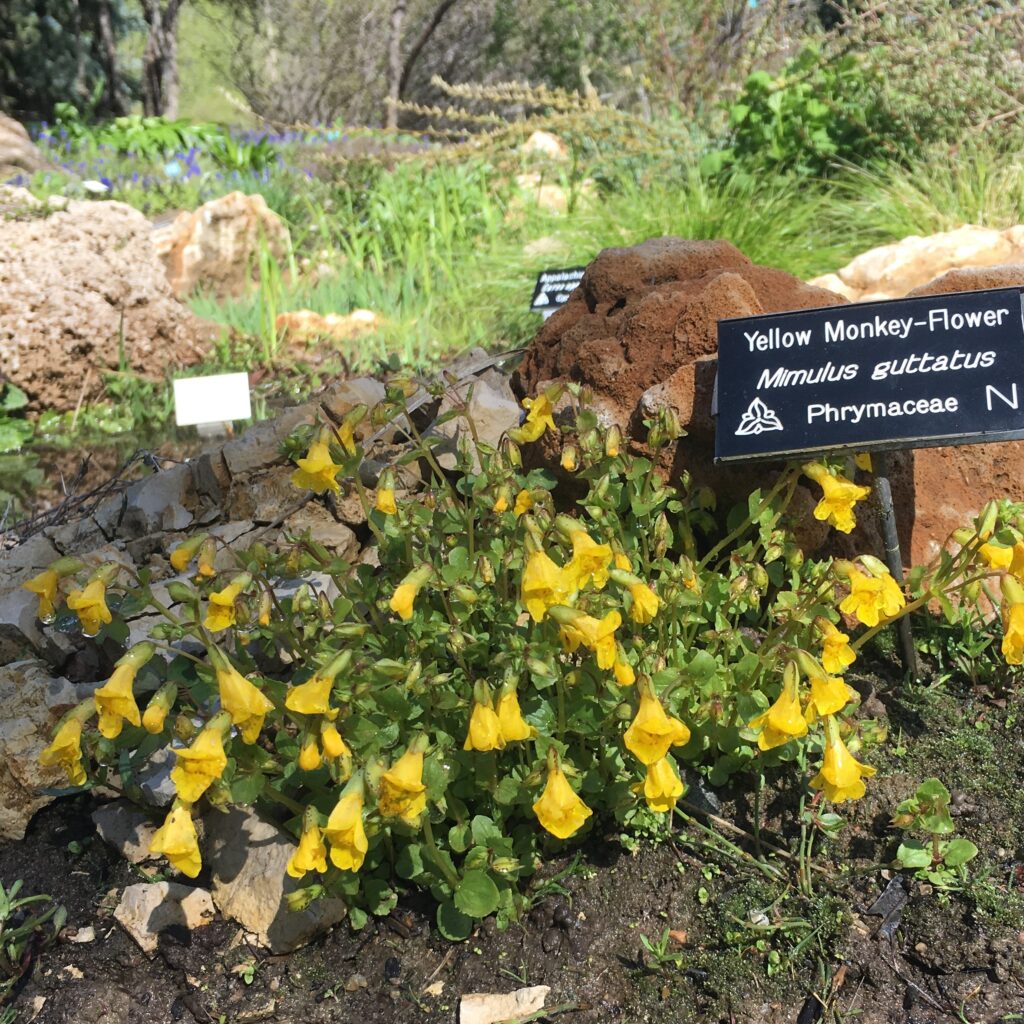
“Seep” because it likes to have wet feet. This gem grows along mountain streams in the Zirkels and Flat Tops. The patch we have in the bog was grown from seed collected in the wild. They are successful and re-seeding now.
Mountain Ball Cactus
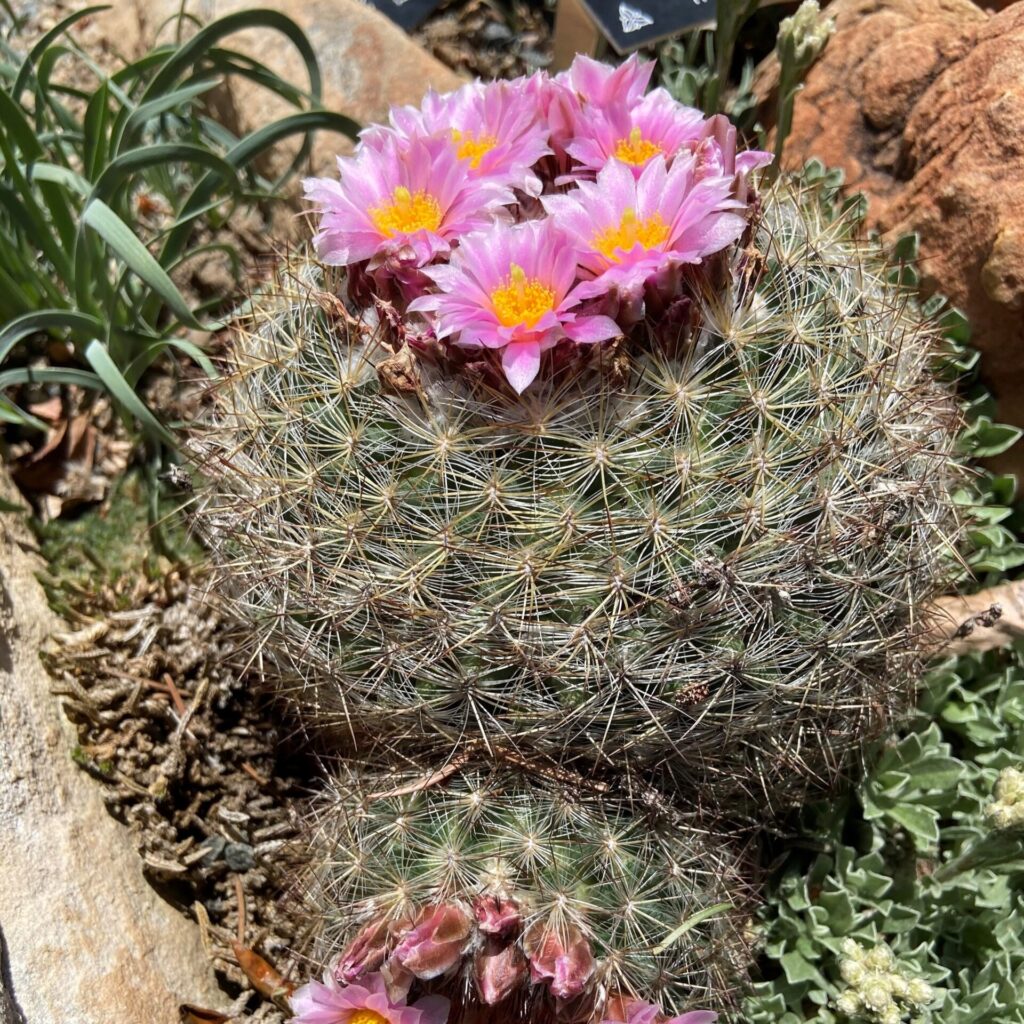
This cactus is fairly common in the sagebrush steppe but can be found up to 10,00 feet elevation. These hardy cacti survive under all our snow and bloom early for the first bees. If you are lucky to find one blooming be sure to get down and smell one of the best fragrances anywhere.
Rock Spirea
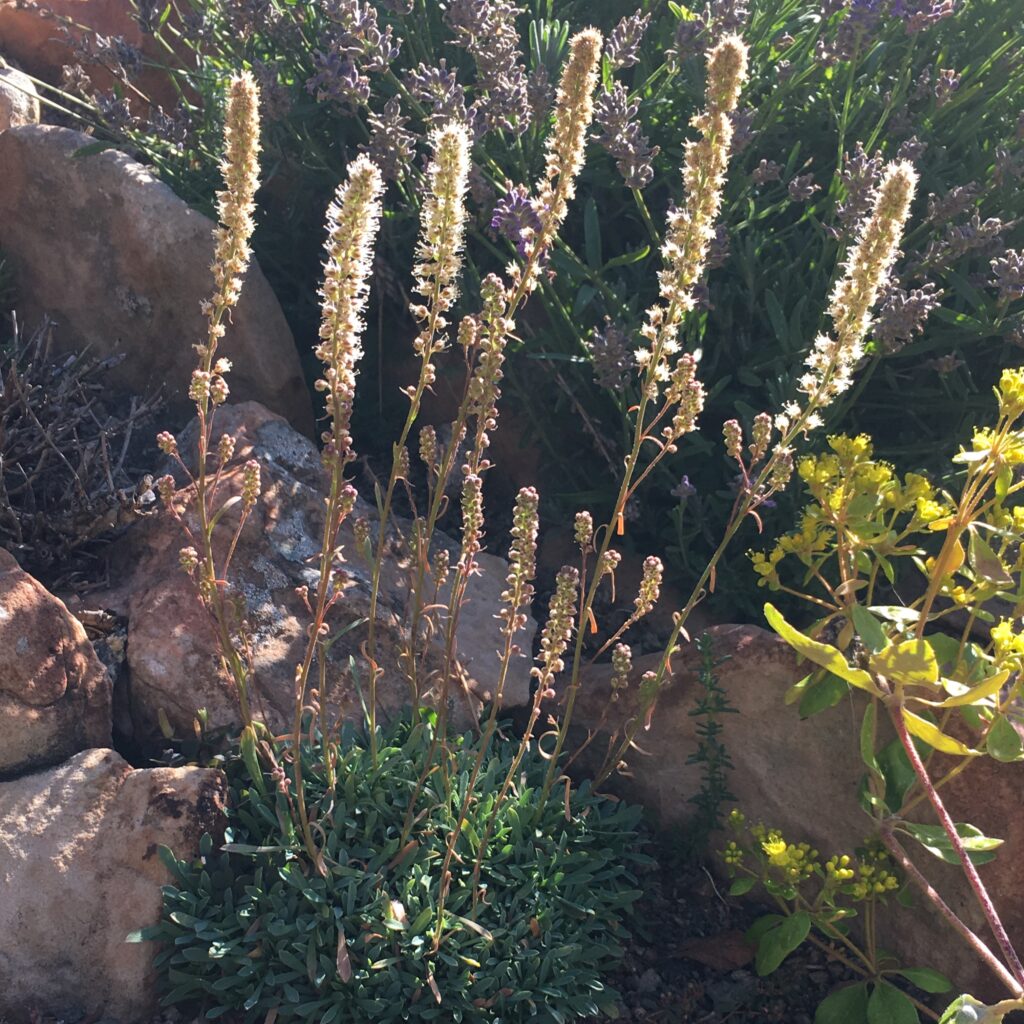
Found clinging to rocks in many precarious spots, these plants grow slowly and a long time. Dense spikes of white flowers with long stamens bloom mid-summer. The small patch in the Park is located along the stairs in the Crevice Garden
Plant Select ® Plants
Plant Select® is a nonprofit collaboration of Colorado State University, Denver Botanic Gardens and professional horticulturists. Plant Select plants exhibit these eight attributes:
- Flourish with less water
- Thrive in a broad range of conditions
- Habitat-friendly
- Tough and resilient in challenging climates
- One of a kind/unique
- Resist disease & insects
- Long-lasting beauty
- Non-invasive
Typically, these plants provide more beauty with less work so gardeners of all levels can achieve smart, stunning and successful gardens using fewer resources and with a more positive environmental impact.
Mock Bearberry Manzanita
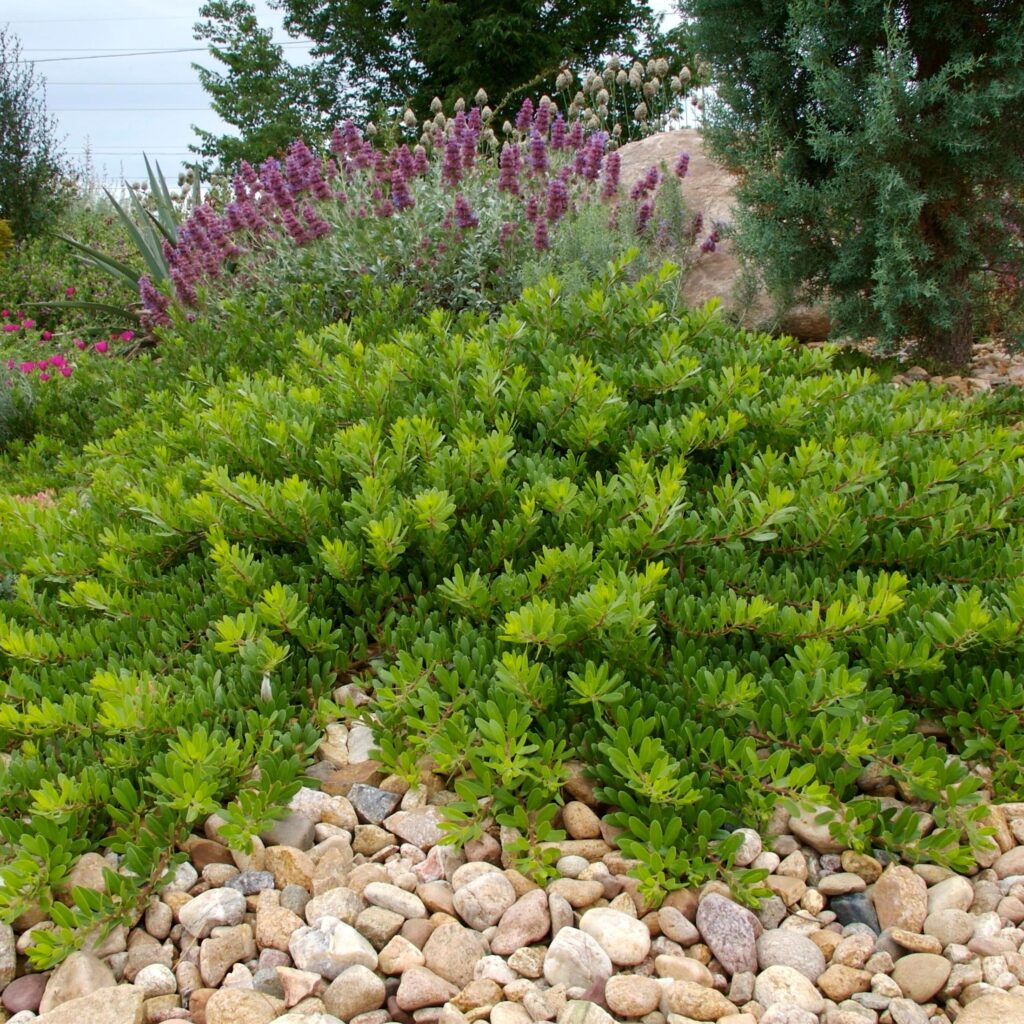
A xeric, native broadleaf evergreen shrub from the Uncompaghre Plateau. Waxy, urn-shaped, white flowers produce small red berries on established plants. Look for it in the Spring the Waterwise Garden.
COLORADO GOLD® Gazania
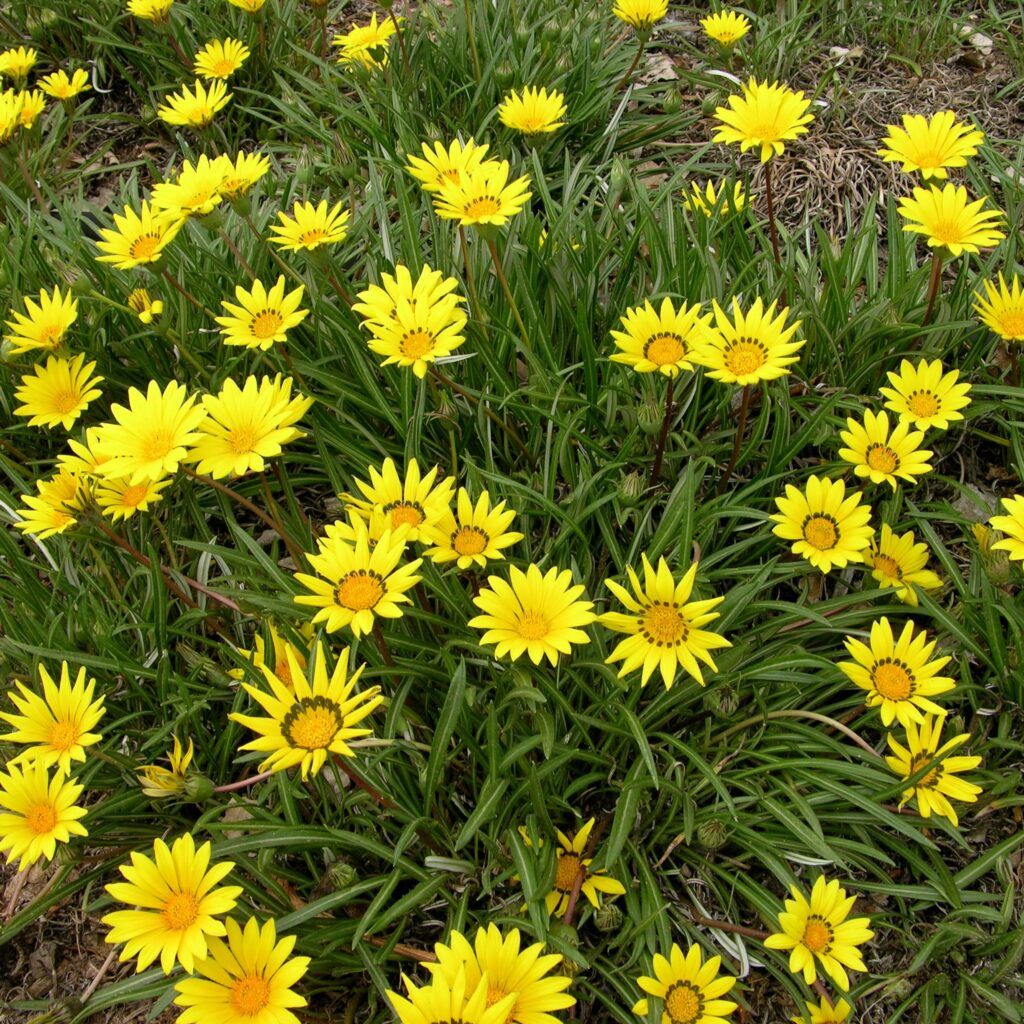
A xeric perennial, this variety is more cold hard than other Gazanias. Shiny yellow flowers can be spotted throughout the season in the Yellow Garden.
Avalanche White Sun Daisy
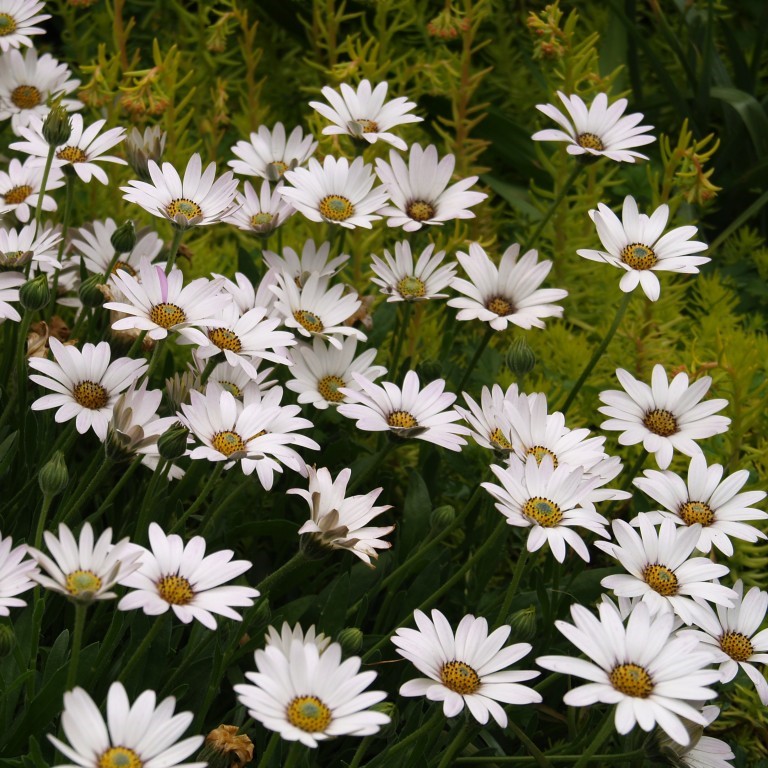
Dazzling white flowers with metallic backing from April through summer with nearly succulent, evergreen foliage. It has greater disease resistance and heavier summer bloom than the other hardy sun daisies. They can be seen in the White Garden.
SILVERTON® Bluemat Penstemon
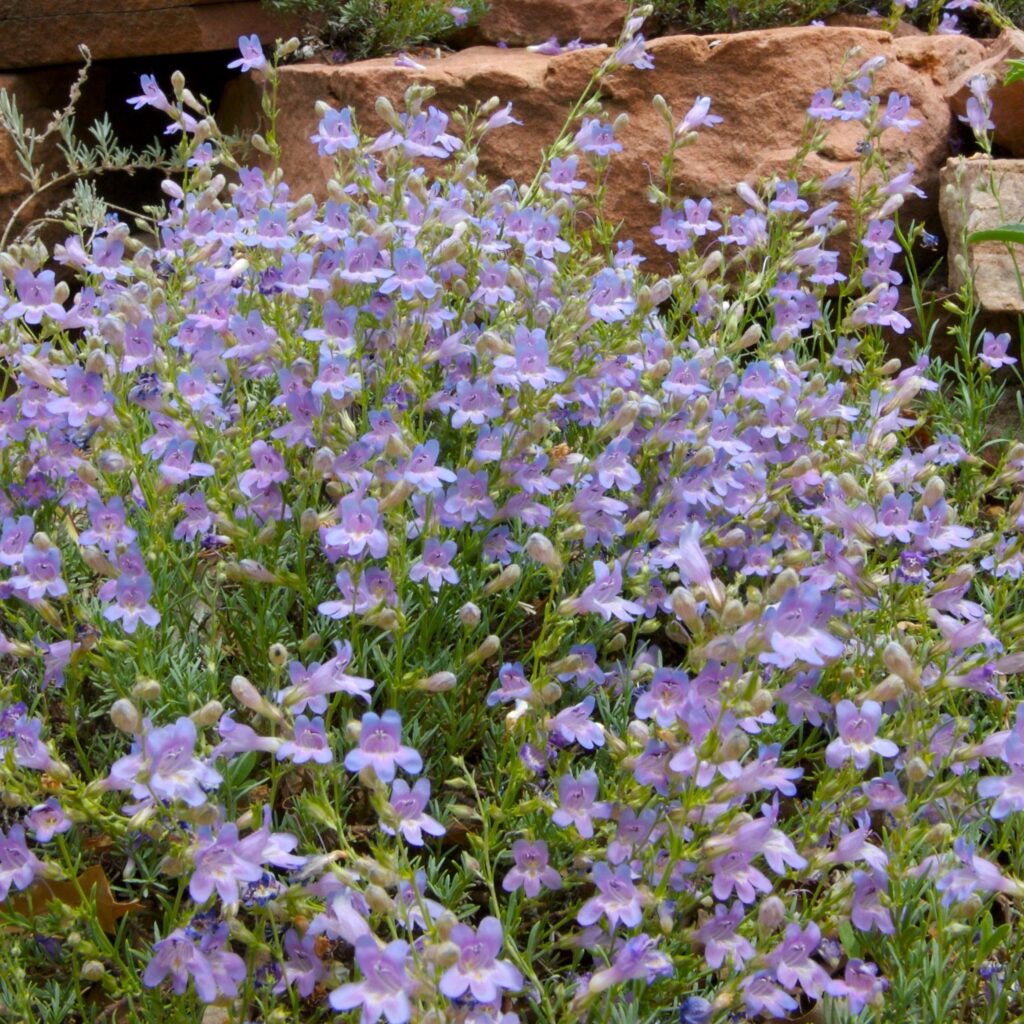
Lavender-blue flowers shine on top of evergreen leaves in the spring and early summer. This plant thrives in poor soil and does not like much water. Look for them in the Penstemon Garden.
Partridge Feather
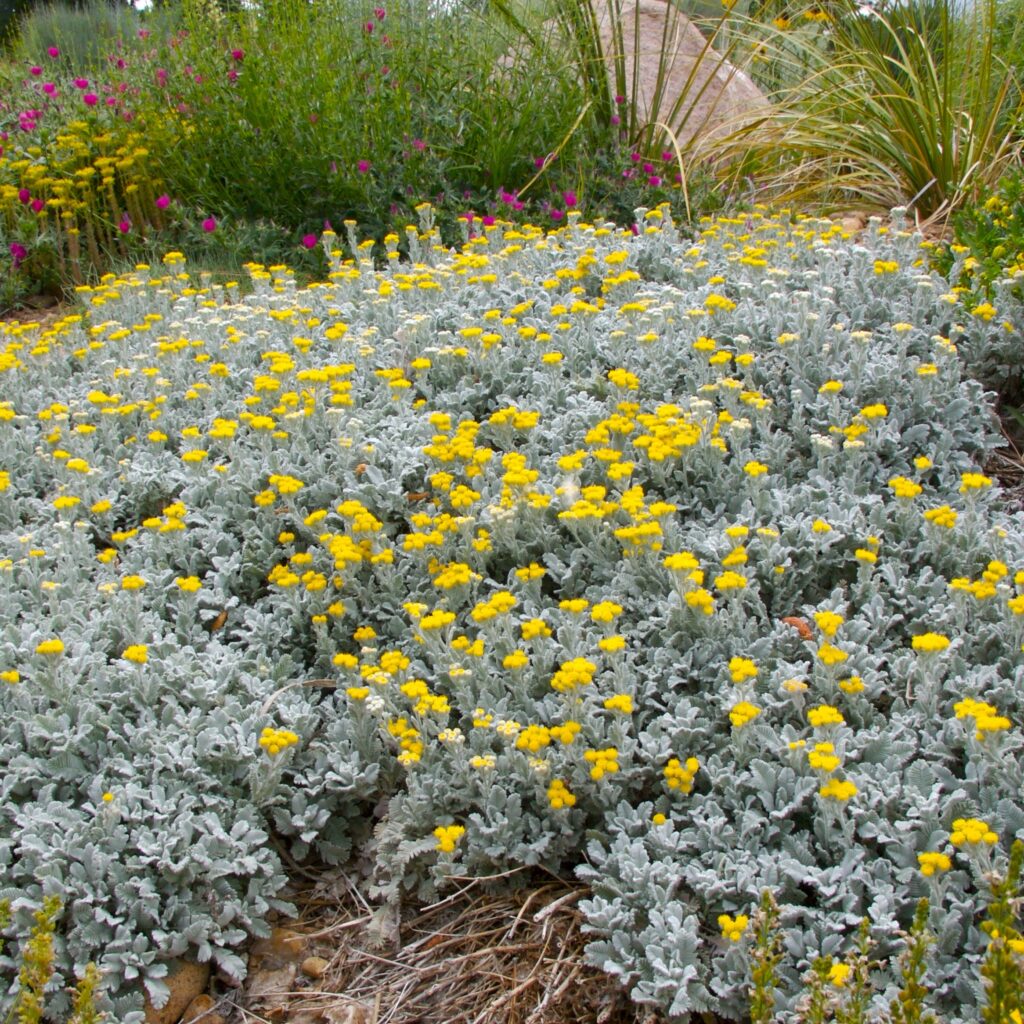
Introduced from southeastern Turkey, this silver mat of foliage adorns yellow button flowers in the summer. As this plant loves dry soil, look for it in the Member’s Rock Garden.
ORANGE CARPET® Hummingbird Trumpet
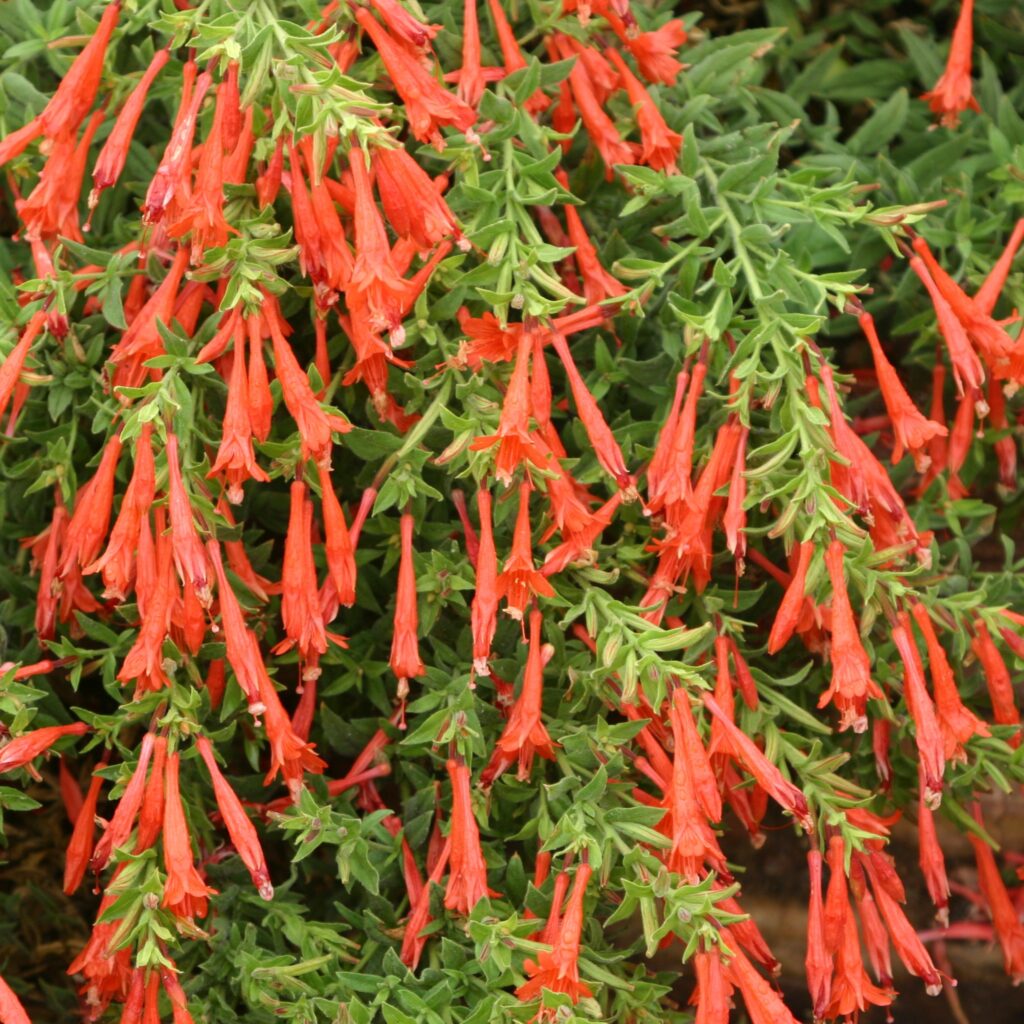
Rapidly spreading groundcover with masses of orange-scarlet flowers in summer. A selection made from seed collected in Idaho, this is the best form of California fuchsia for high altitude or cool climate gardens. The largest collection can be seen in the Orange Garden.
Plants From South America
Many plants from the Andes mountains and south American Steppe do well in the Yampa Valley. The climate is similar to Patagonia, but the adaptations are very different. In a friendly partnership with the Denver Botanic Garden, the Park receives plants from them to trial here in our gardens.
Peruvian Lily
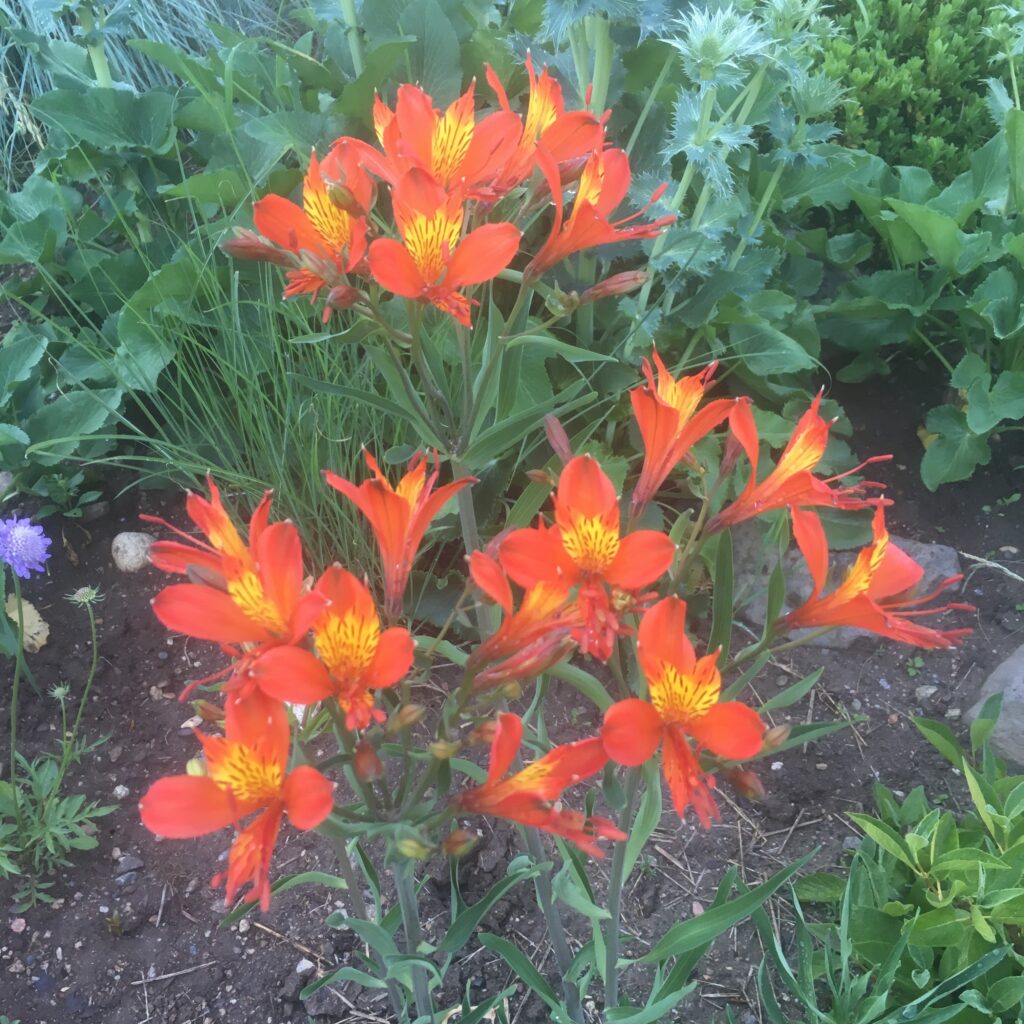
A very hardy lily from the mountains of Peru, it grows almost two feet tall and blooms for a very long time. Striking orange flowers are great attracters for butterflies, yet are deer resistant. Find this beauty on the lower north west corner of the Water Wise Garden.
Slipper Flower
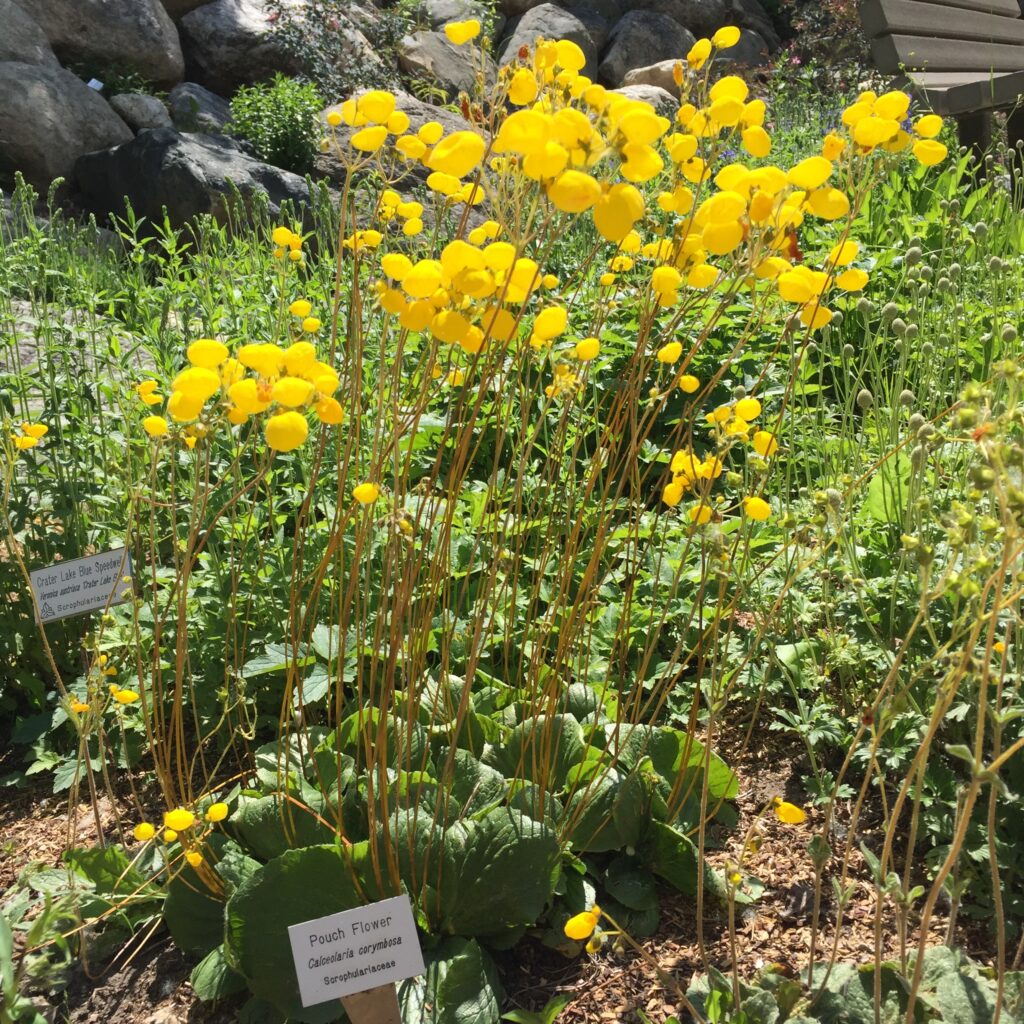
A Chilean native, delicate pouches of yellow perch on top of 12” stalks. Wavy, fuzzy leaves in tight rosettes anchor this gem of a flower. Look for it to flower in mid-spring on the flat part of the Painter’s Garden.
Patagonian Verbena
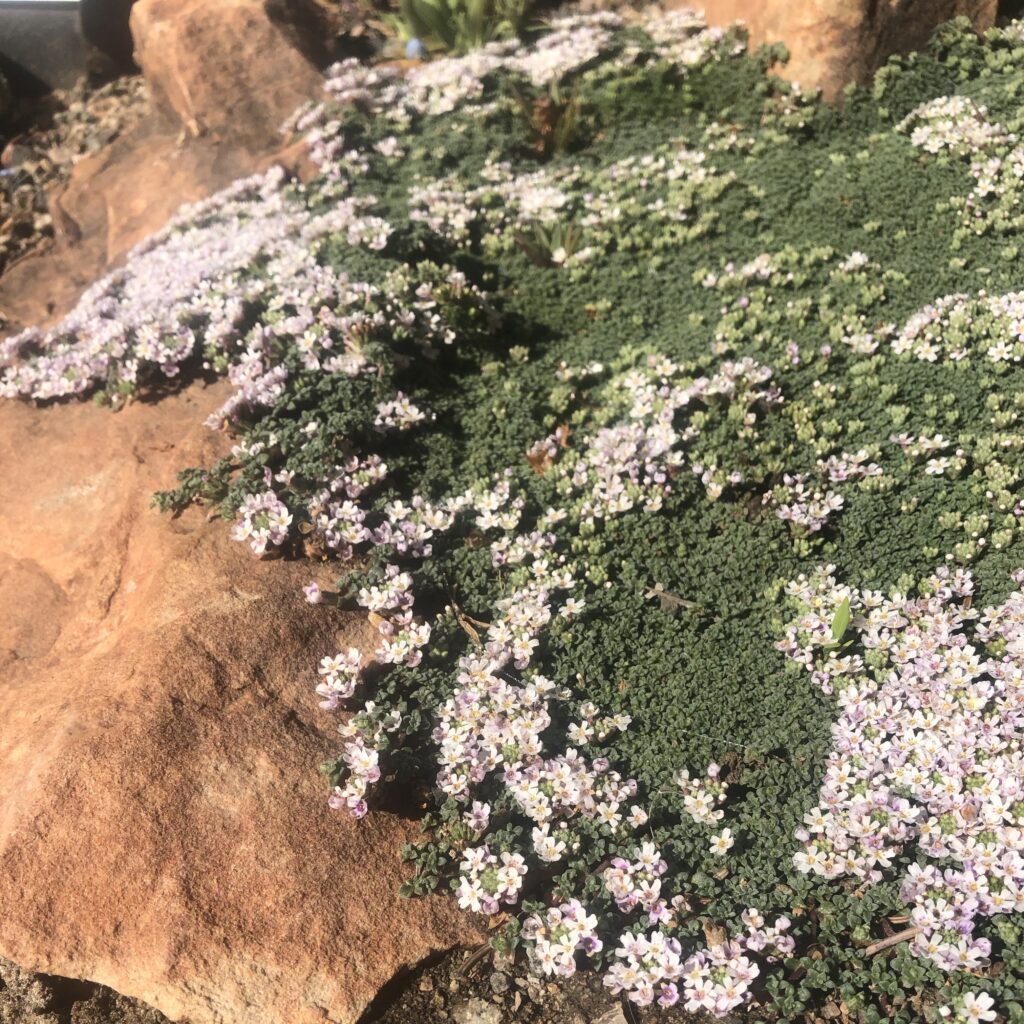
A small, prostrate mat forming plant from Argentina. It is in the Verbena family and even though the flowers are tiny, they are very fragrant. The best specimen of these is located at the top of the stairs in the Crevice Garden. Get down low and get a whiff!
Yellow Monkeyflower
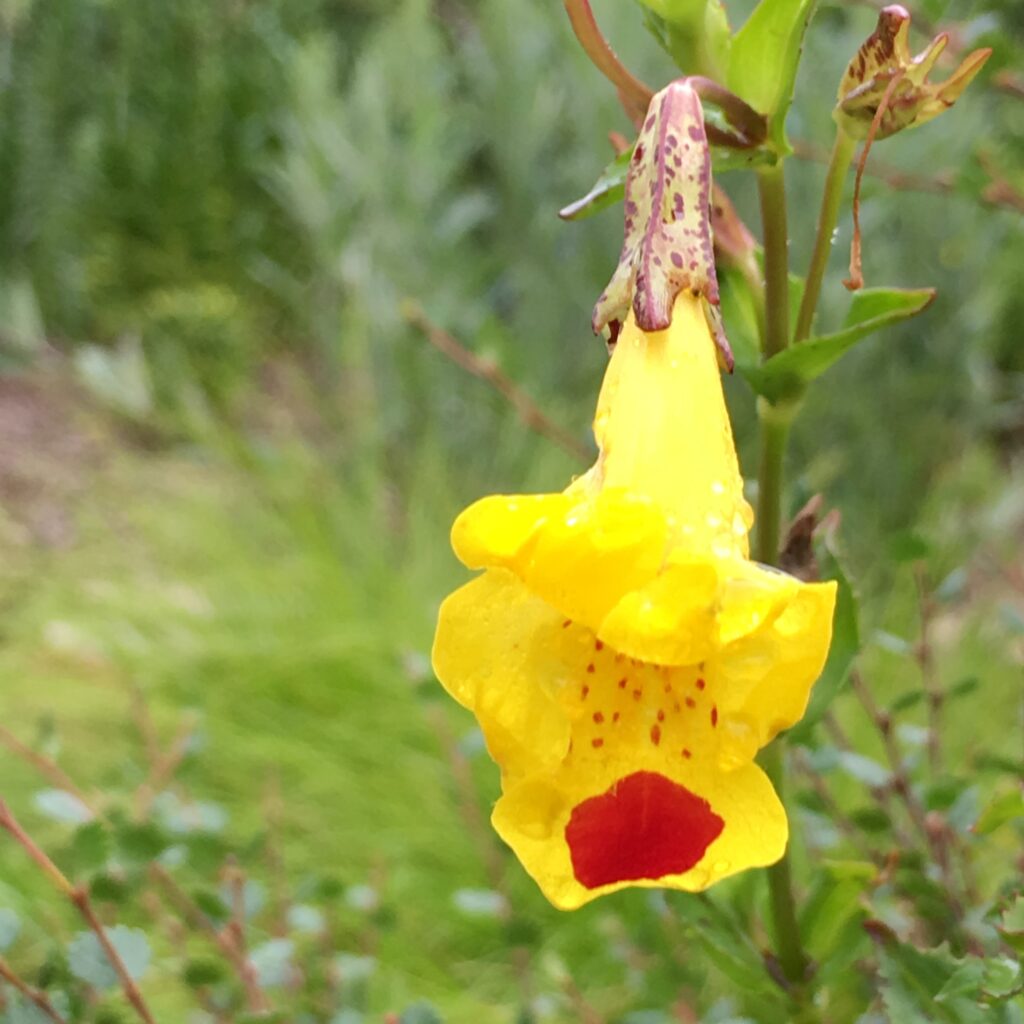
A yellow flower with a bright red spot on its lip. These are native in Chile but are doing great in the bog section of the Sundial Garden.
“Hiebra Negro” in its native Chile
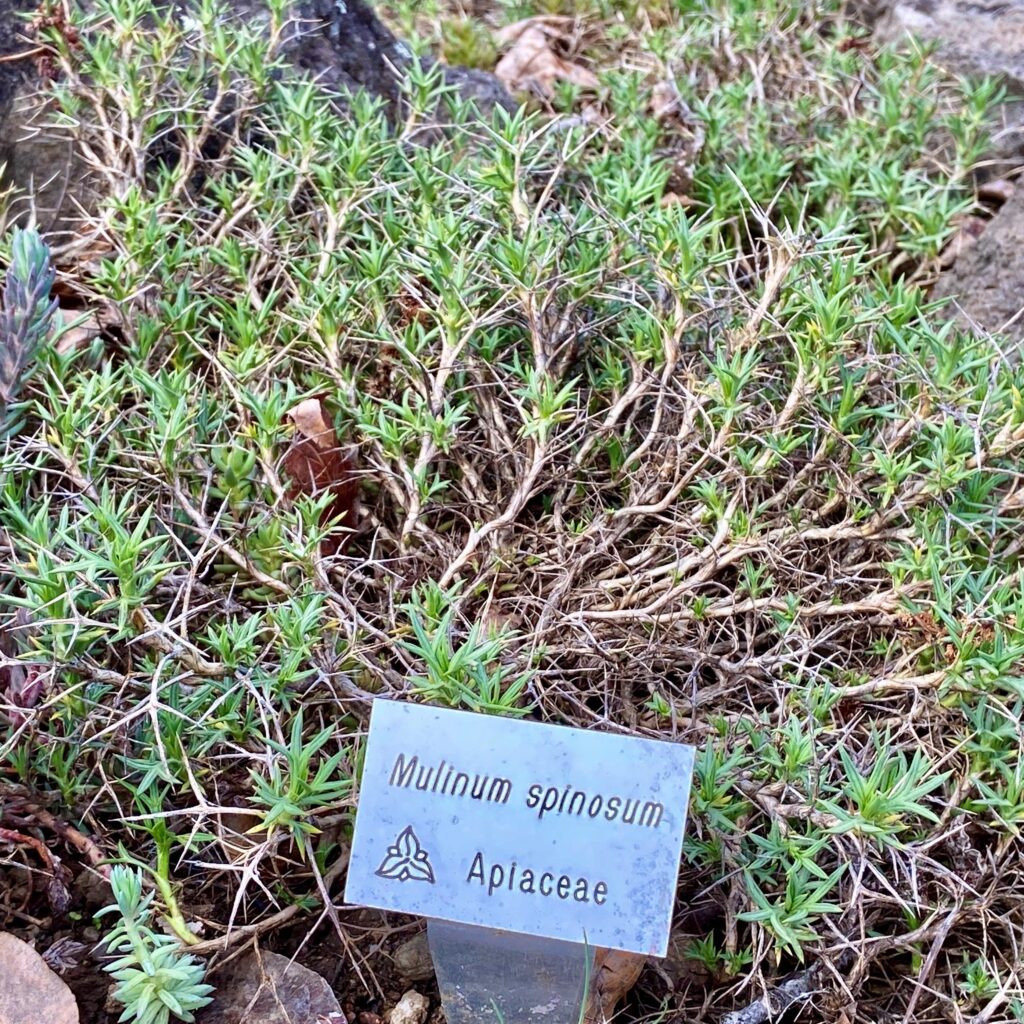
An endemic in the western Chilean mountains, it is a thorny perennial shrub with many medicinal uses for the native people. Not a very showy plant but important because it has survived several years in the Water Wise Garden.
Silver Shamrock
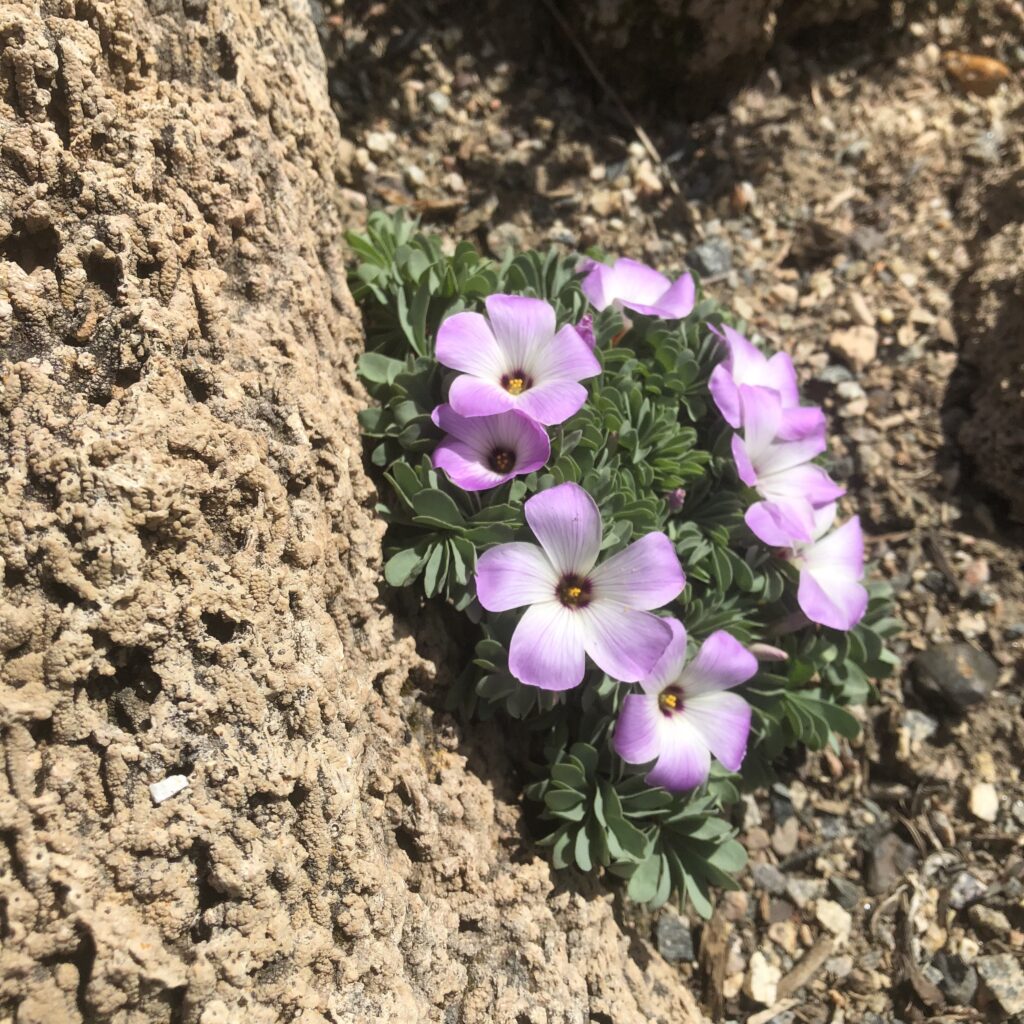
From Chile & Argentina this Alpine plant does well in northern climates and is best grown under the snow for the winter. Small bulbs grow a mass of silvery, dissected leaves. The spring flowers are mostly white tinged with pink and have purple veins. There are several planted in the Crevice Garden and the Sundial Garden.
Unusual Ornamentals
Tumbleweed Onion
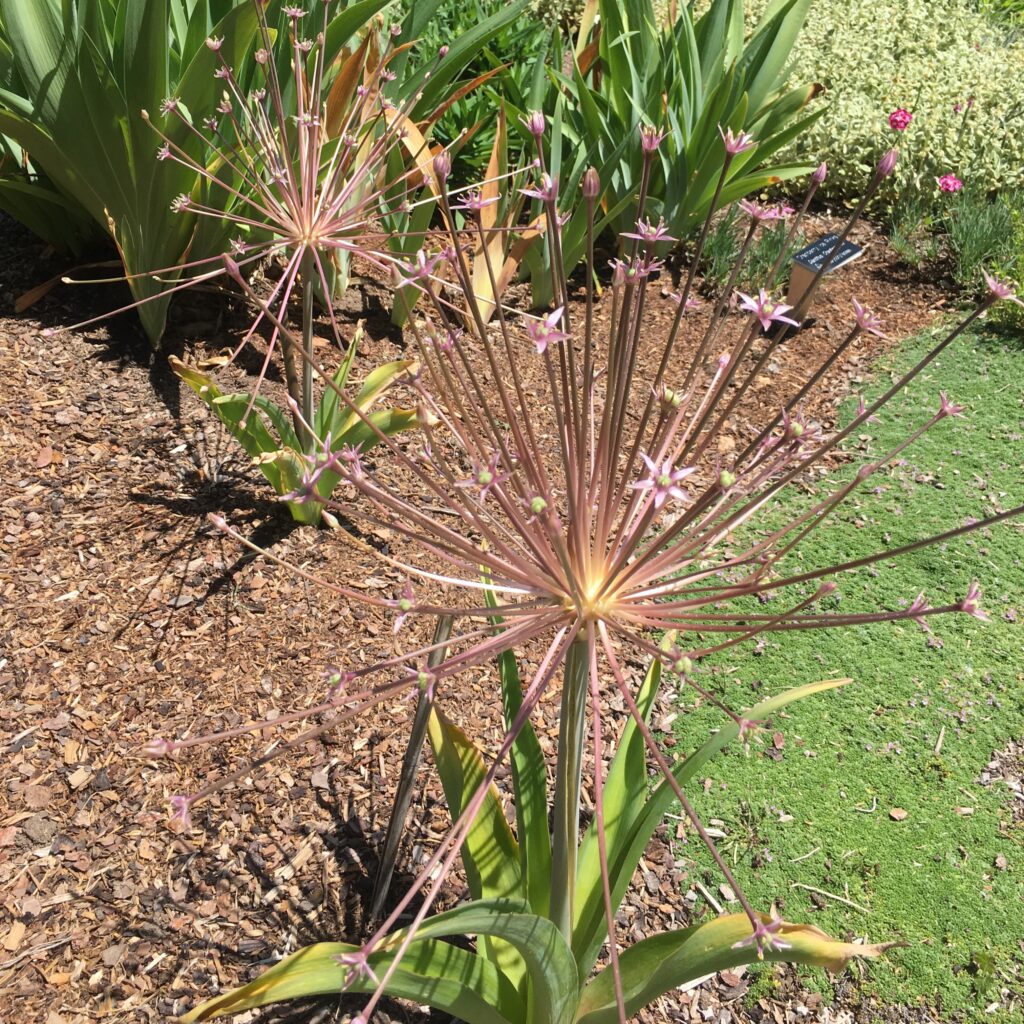
Named so because the seed heads break off when dry and roll around the Libyan desert. This unusual onion puts out a flower head that is somewhat like fireworks, round with many flower stalks and tiny pink star flowers. Find them in the spring in Doris’ Arbor Garden.
Bellflower
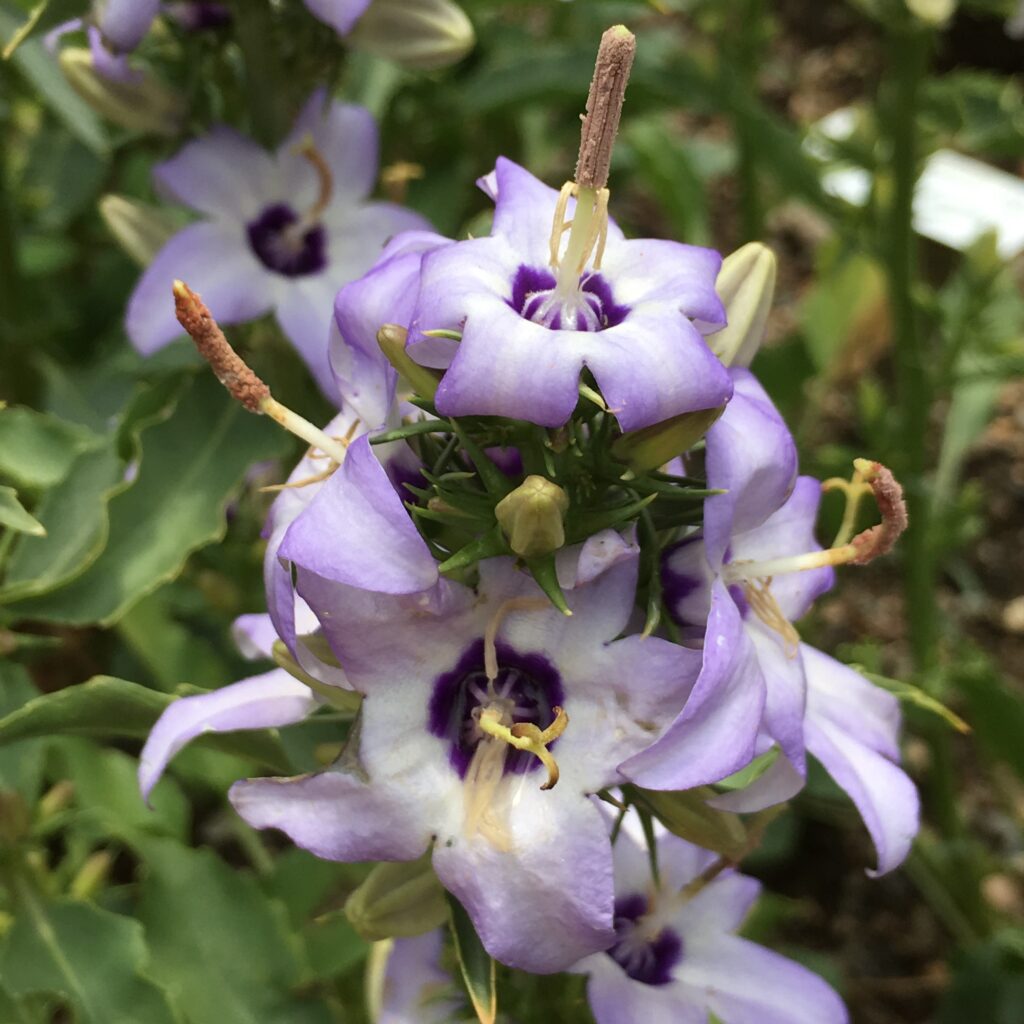
Different looking than most bellflowers, the flowers have reflexed petals and make the flowers look inside out. Find this at the very top of the Crevice Garden.
Miss Willmott’s Ghost
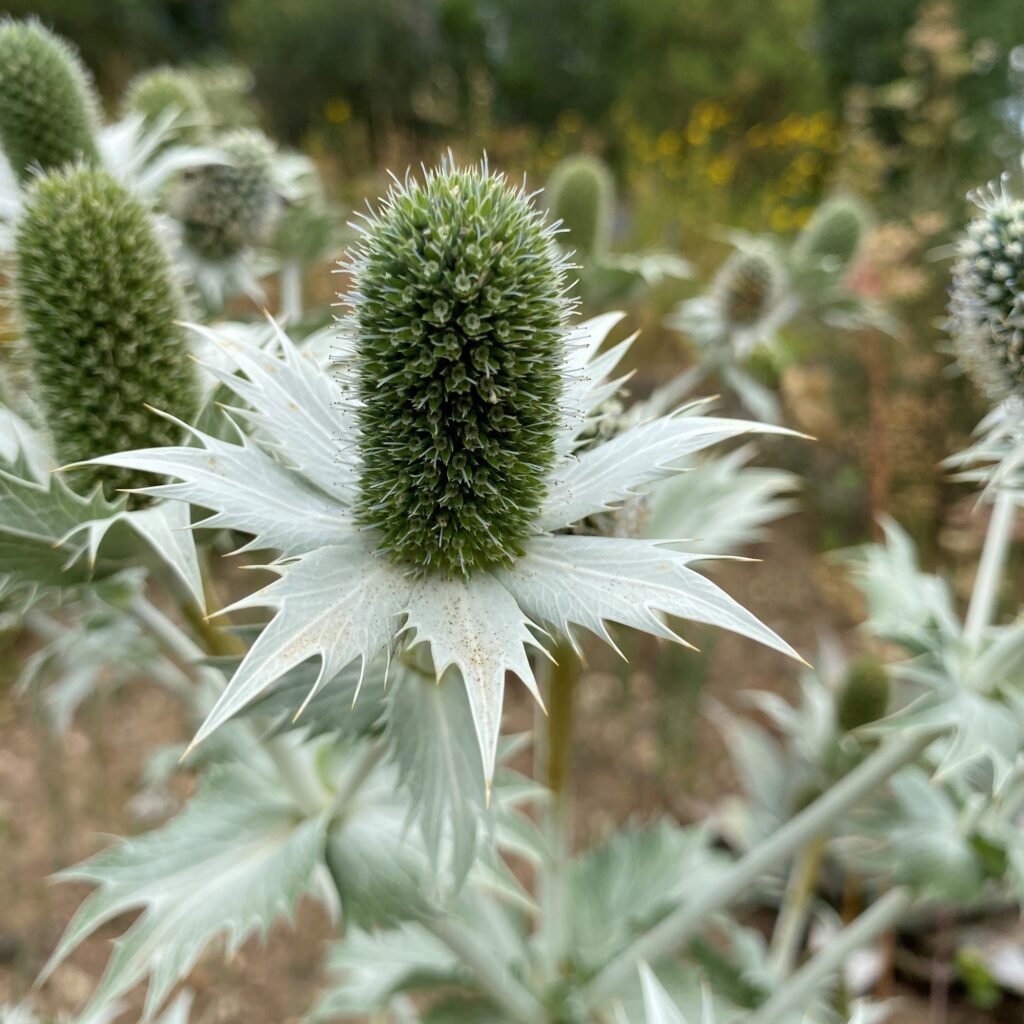
This biennial has large, spiny, silver bracts which surround an egg-shaped flower head of tiny green flowers. The bees LOVE this plant. Miss Wilmott blooms mid to late summer. This plant puts on a show in the Water Wise Garden.
Molly the Witch Peony
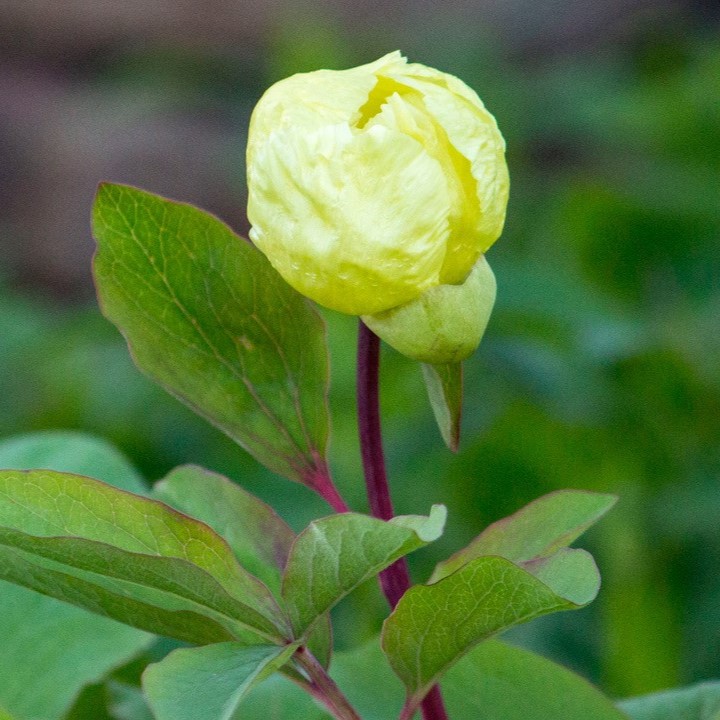
Originally from the Caucus mountains of Azerbaijan where it grows in forests, this peony has beautiful blue green leaves with purple veins and a single, yellow blossom. This plant was only discovered in 2002. Look for it in Jeff’s Garden, the Garden for All Seasons, and the Sundial Garden.
Chinese Pagoda Primrose
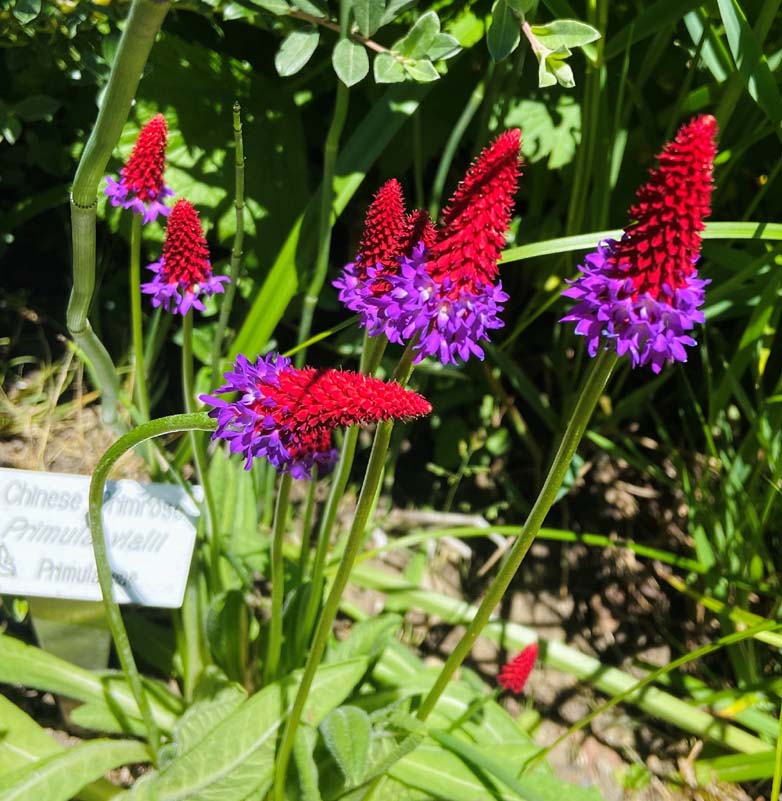
This species comes from moist mountain areas of China. The spike arrangement of the orchid colored flowers contrasting with the bright red of the buds making a striking display. It blooms in mid-summer. Find it on the edge of the bog in the Sundial Garden.
Windflower
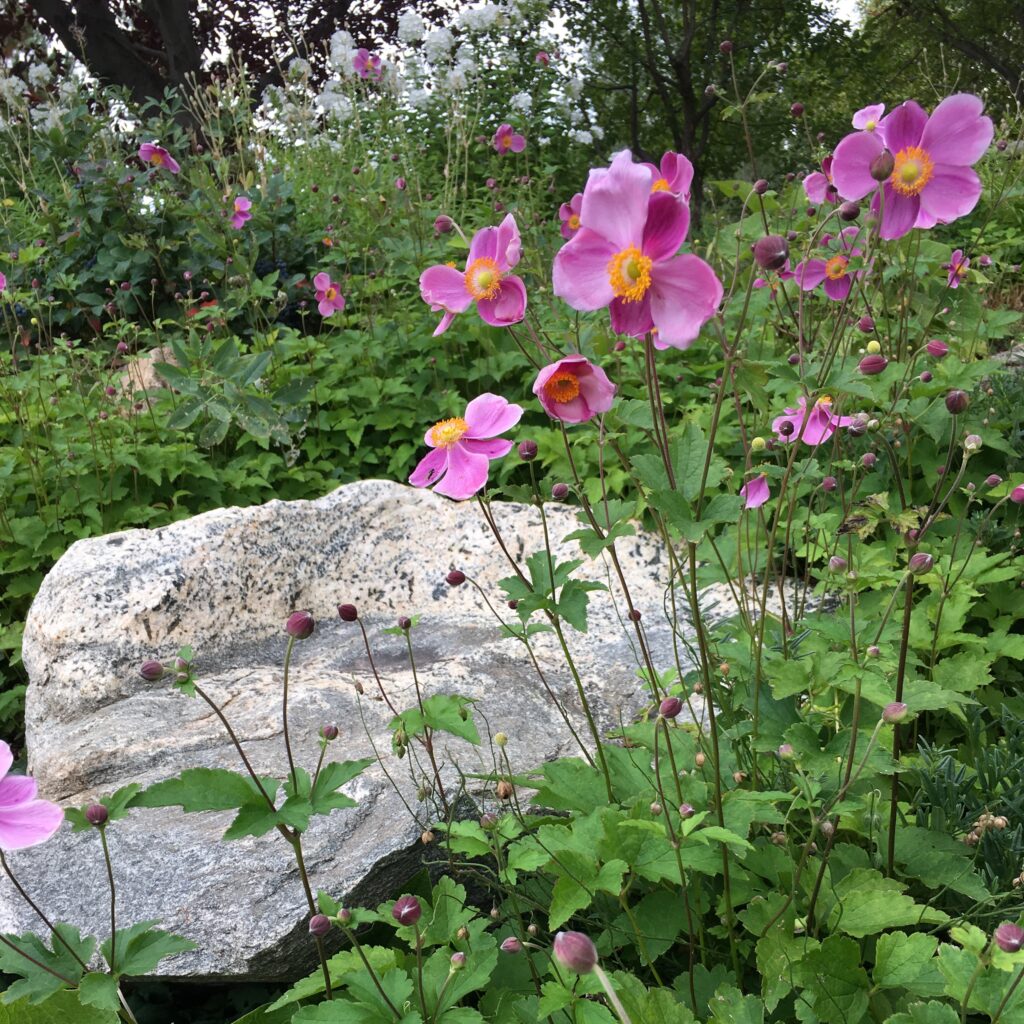
This Japanese hybrid windflower needs some partial shade and ample water to do well. It is one of the latest flowers at the Park. Some years the frost takes them, but when they bloom it is the unusual, asymmetric flowers that catch your eye as they sway like windflowers should. Sascha’s Garden has a large clump; also found growing in the Painter’s Garden.
Plants of Historical Significance to Steamboat Springs
The Harison Rose
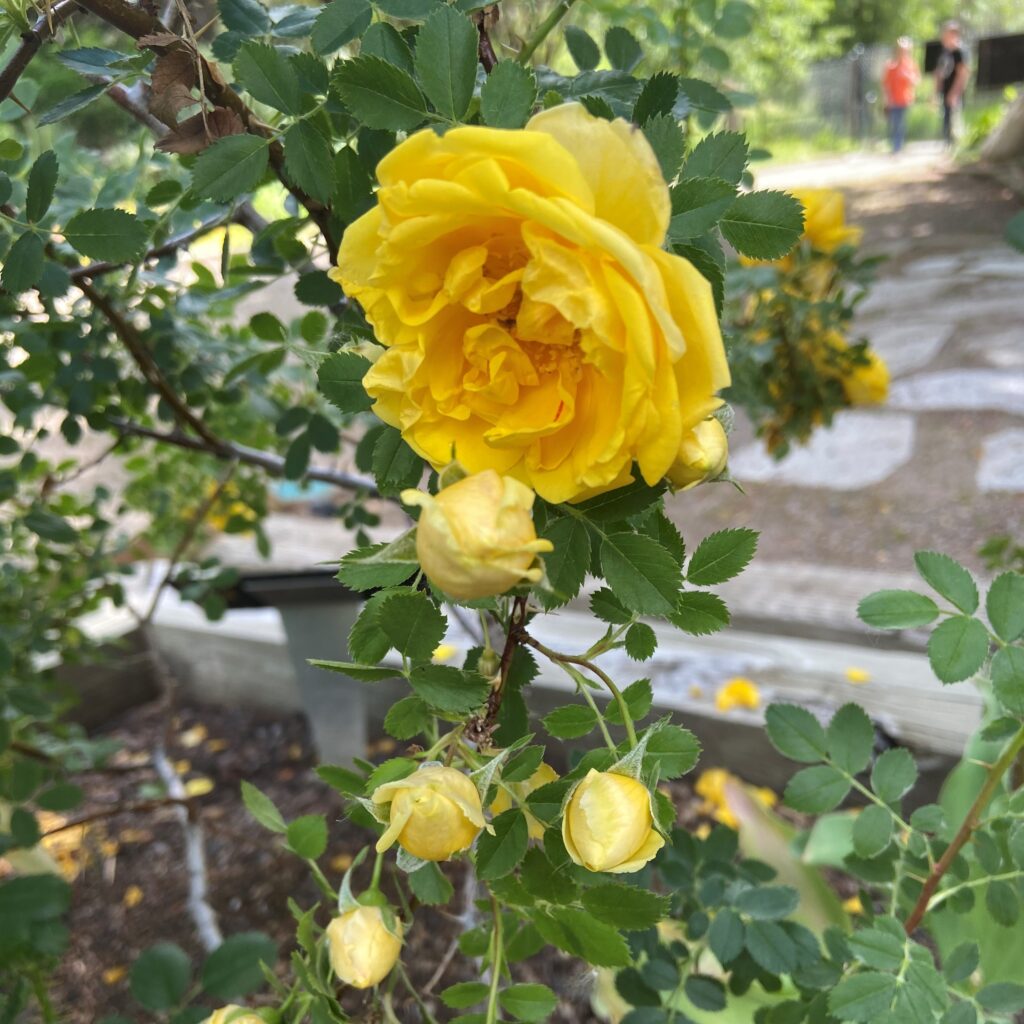
Rosa ‘Harison’s Yellow’
When Margaret Crawford stepped into the family covered wagon in St. Louis for the long trek to Colorado, she carried not only her new baby, but the roots of a yellow rose. ON the hard journey she used her own rationed drinking water to keep the roots alive. The flower bloomed so profusely in Colorado that the miners called it Women’s Gold. Just as the Harison Yellow rose took root, multiplied, and benefited the beauty of the state, so did the women who settled here.
Yampa
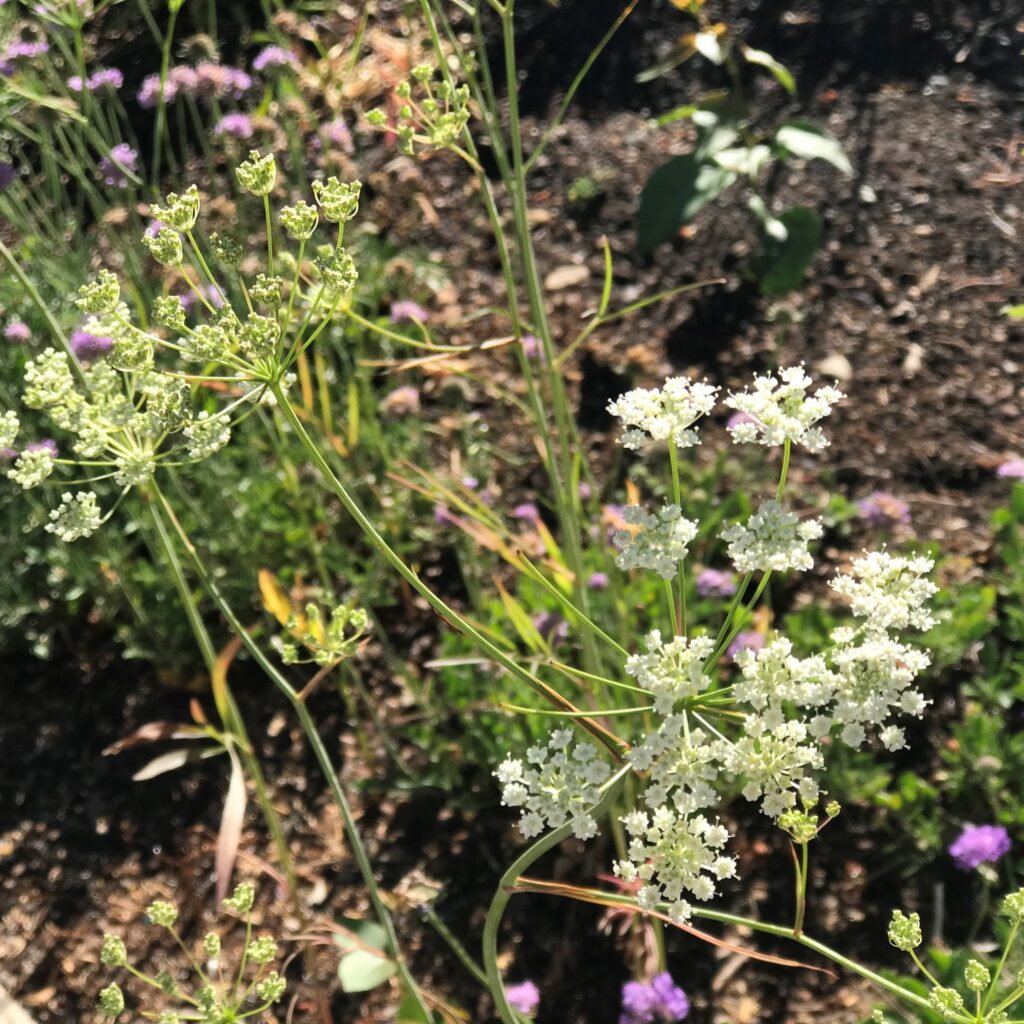
The Yampa River Valley, hence the Yampa River Botanic Park, was named after this plant which was an important food source for native peoples and pioneers. The small, white taproot tastes like a sweet, nutty carrot. Be careful identifying these in the wild as some look-a-likes are poisonous. Find Yampa in the Sensory Garden.
